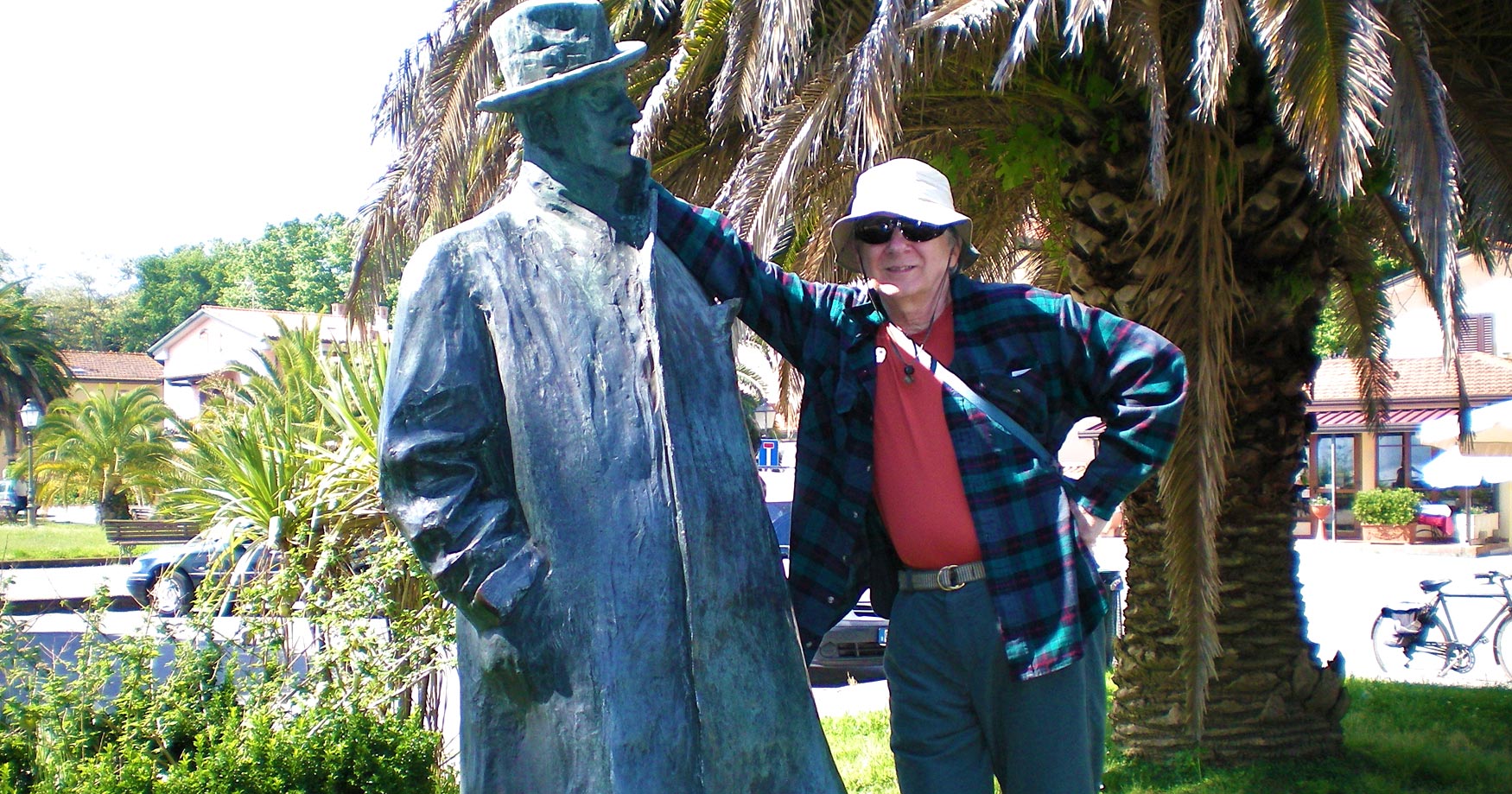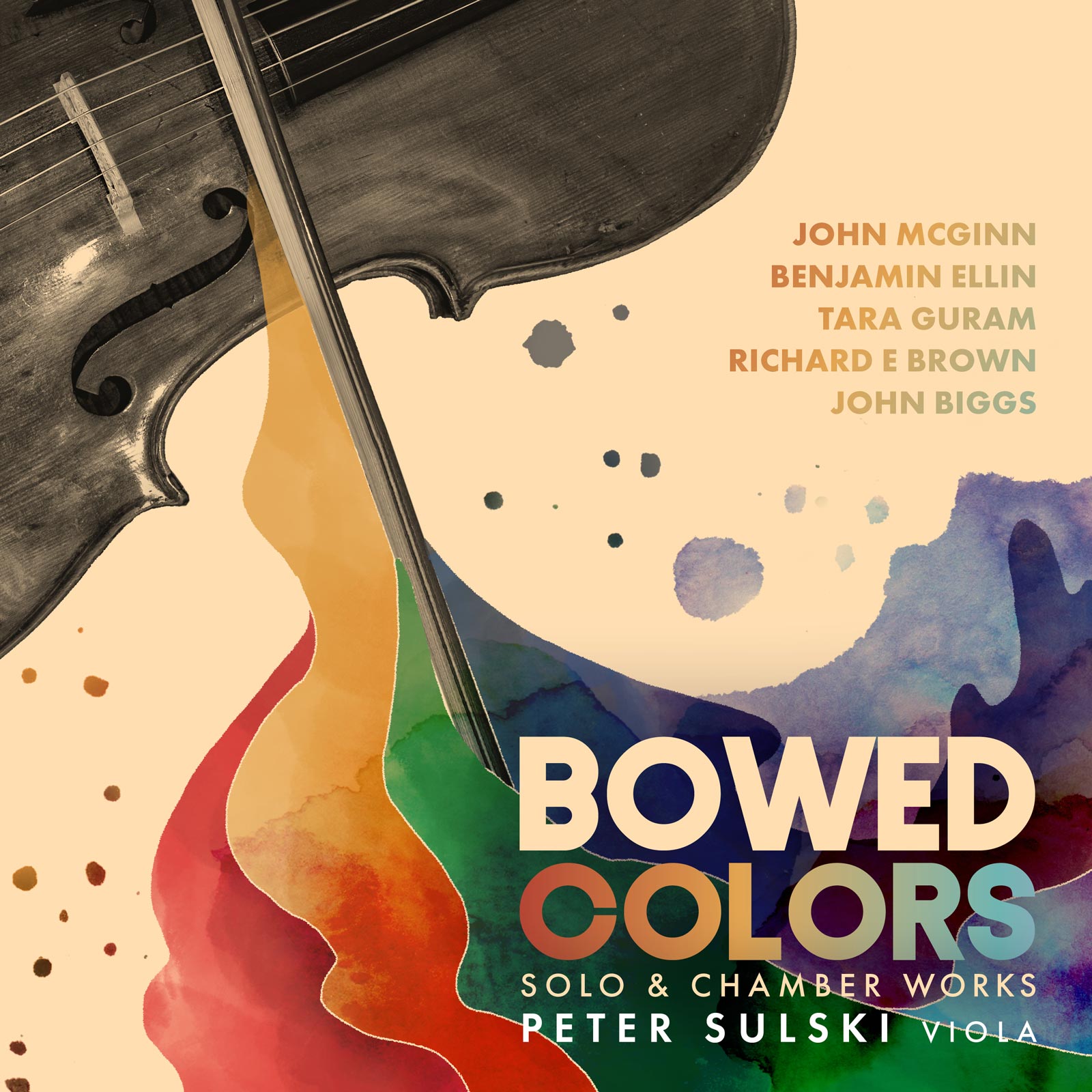Combining violist Peter Sulski’s signature sound with the works of five composers, BOWED COLORS delivers an exquisite selection of contemporary solo viola pieces that range from the neoclassical to the just barely tonal, all tightly knit together by Sulski’s sublime bow control and finesse as a performer. Featured on the album is composer Richard E Brown and his piece Sonatina for viola and piano, a modified sonata form where tonal relationships within and between the movements are all based on seconds.
Today, Richard is our featured artist in “The Inside Story,” a blog series exploring the inner workings and personalities of our composers and performers. Read on to learn about his aspirations to collaborate with Yo-Yo Ma, and what he hopes his piece will mean to listeners…
If you could collaborate with anyone, who would it be?
That is like asking me who is my favorite composer: there are far too many that I greatly admire to easily choose just one. But to follow the fantasy, I would choose working with the great cellist Yo-Yo Ma on a concerto for his instrument. There are dozens of world class soloists with impeccable technique and musicianship out there, but to me he seems to have the most personality onstage and when you watch him play, he always seems to be having a great deal of fun. Yo-Yo Ma is arguably the most recognized cello soloist performing today, so writing a concerto for him and then having him present it to the world would definitely be the thrill of a lifetime for me!
Where and when are you at your most creative?
I would like to say that I sometimes wake up in the middle of the night with brilliant ideas, or that I come up with them while I am hiking some forest or mountain trail. In fact, I actually do occasionally wake up at night with ideas, but they are seldom brilliant enough to get me up to write them down, and I usually will have forgotten them by morning. Likewise, I do sometimes work out ideas in my head while hiking, but they usually turn out fairly pedestrian (pun intended) and I don’t always end up actually using them. So, without any exciting times and places to tell you about, I have to admit that I am at my most creative at home in my workroom, when forced to creativity by a looming deadline.
If you could make a living at any job in the world, what would that job be?
I have to treat this as another fantasy question, because to answer it, I must assign myself some important skills that in reality I do not possess, rendering me very unqualified. But with that caveat, I would choose to be the music director and principal conductor of the Boston Symphony, one of the “Big Five,” and located in a part of the country that I am especially partial to…although I presently live on the opposite edge of the continent, at the other end of I-90!
What was your favorite musical moment on the album?
I come from a background of writing mostly for students and other amateur musicians, so on any multi-composer album I am always unabashedly partial to my own contribution to the program. This is not because I think mine is the best or most interesting piece on the album, which it usually isn’t, but because after working so hard on a piece of music, I am thrilled to hear it flawlessly recorded by professional musicians…an exciting contrast to the amateur performances that I am accustomed to hearing.
What does this piece mean to you personally?
I consider my series of sonatinas for various solo instruments and piano to be my signature contribution as a composer of instrumental music for advanced student musicians. This album presents the first one of those to be professionally recorded and distributed, so that makes it very special to me.
Is there a specific feeling that you would like communicated to audiences in this work?
The cover notes to this album describe the program as ranging “from the neoclassical to the just barely tonal.” Well, this is obviously the neoclassical piece being referenced, so while I don’t want listeners to expect to hear warmed-over Haydn in this composition, I do hope that they will recognize and follow the obvious, but somewhat scaled-down, classical forms that I am using: sonata-allegro, theme & variations, and abridged sonata-rondo, as well as the tonal relationships — all based on intervals of seconds — within and between the three movements.
Explore Brown’s Latest Release
BOWED COLORS
BOWED COLORS is available now from Navona Records. Click here to visit the catalog page and explore this album.
The views and opinions expressed in this post are those of the artist and do not necessarily represent or reflect the views and opinions held by PARMA Recordings LLC and its label imprints, subsidiaries, and affiliates.




